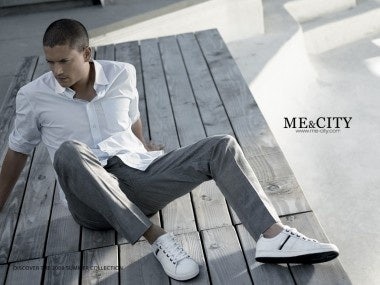Some In China Feel Country's Fashion Industry Headed Towards Fast Fashion Rather Than Luxury#

While the buzzword "fast fashion" may be somewhat new to the China market, fast fashion itself has been around in some form or another for the past few decades, mostly in the form of low-priced items of questionable quality sold at street-side outdoor markets. In recent years, however, home-grown mass market brands like Metersbonwe and online retailer Vancl have emerged as China's top fast fashion contenders, even as foreign retailers like H&M, Zara, Uniqlo and others have plowed their way into the already crowded market.
In response to the success of H&M and Zara in the Chinese market, some Chinese fast fashion retailers have stepped up to the challenge by launching new, somewhat more "upscale" brands to woo consumers who find the allure (and affordability, relative to imported luxury brands) of foreign brands irresistible. In late 2008, Metersbonwe debuted its ME&CITY brand, targeting middle class, twenty- to thirty-something white collar professionals and signing celebrities like Wentworth Miller of "Prison Break" (arguably a bigger star in China than in his native United States), actor Orlando Bloom and model Agyness Deyn for ad campaigns.
Since its launch nearly two years ago, ME&CITY has opened more than 85 locations throughout China, but the company has seen some of its greatest success in second-tier cities. As Sina pointed out last year, much of ME&CITY's growing popularity in smaller markets comes down to the fact that the brand arrived in many second-tier cities before H&M and Zara. However, with annual revenue last year of 350 million yuan (US$51.7 million) -- only about 1/10 of what Metersbonwe took in -- ME&CITY is still a few years away from profitability.
Another of China's fast fashion contenders, URBANEIGTHDAY (sic), which aspires to be something of a Chinese version of Urban Outfitters, is already expanding into third- and fourth-tier markets that international brands have yet to explore. As the brand's general manager said in an interview last year, URBANEIGTHDAY is trying to compete with foreign fast fashion retailers on the basis that Chinese companies "better understand what Chinese consumers want to wear," and are more open to experimentation.
So, in the battle to become China's Uniqlo, or Gap, or H&M, how can we gauge who's coming out on top? How can upstart Chinese retailers compete in this space? This week, China Fashion Net proposes a "China Model" of fast fashion, noting that Chinese brands are inherently at a disadvantage when competing directly with larger foreign competitors, and as such must put as much -- if not more -- focus on branding as they do on product. Among other recommendations for success in the fast fashion market, such as bolstering supply networks and targeting specific niches (such as footwear), the article has some interesting insights about localization and branding for the China market. Excerpts (translation by Jing Daily team):
[Fast Fashion Retailers Should] Build On Design Efforts, Strengthen Localization
Currently, the fast fashion model consists of a core element that is quickly copied by major brands to follow international trends. Imagine if all of our brands copy one another -- there'd be no personality differences between them, so how is that fashion? So, as our local brands take their journey in the world of fast fashion, they've got to make the gradual move from copying to building the strength of their own design network. (Much like Zara built up their designer networks.)
In addition, product design should also take a number of localized factors into consideration, rather than blindly copying foreign designs. Many of these foreign designs aren't suitable for the Chinese body type and aesthetics. At the lower end, this is going to be even more evident, so localization is key to the success of a domestic brand.
The article goes on to extol the benefits of digital outreach, noting that the Internet is good not only for e-commerce but also real-time interaction with customers and as a barometer for customer wants and needs. Continuing, the article points out that fast fashion brands shouldn't be afraid to venture into untested, smaller markets, since companies like ME&CITY and ME & KAR are making inroads there. Finishing up, it looks at the importance of branding:
Many people believe that the consumption patterns of fast fashion mean that people are concerned primarily with the product, and that the brand is irrelevant. This is just plain wrong. Currently, most fast fashion brands have locations within major department stores along with nearby dedicated boutiques on nearby shopping streets, in order to give customers a chance to consider brand elements when they're shopping. This is part of the reason why Zara and H&M were able to take root in China so quickly. For example, when the first Zara location was opened in Shanghai, the brand became something of a status symbol, because for many consumers this was their first experience purchasing a foreign brand, and as they became more familiar with this brand it led to unexpected "branding."
When domestic brands are competing with famous major foreign brands, when they're first starting out they're at a major disadvantage, like we see currently. Those brands who want to enter the market have to focus on the right things and beef up their branding efforts. So we can say that while product is important, branding is critical.